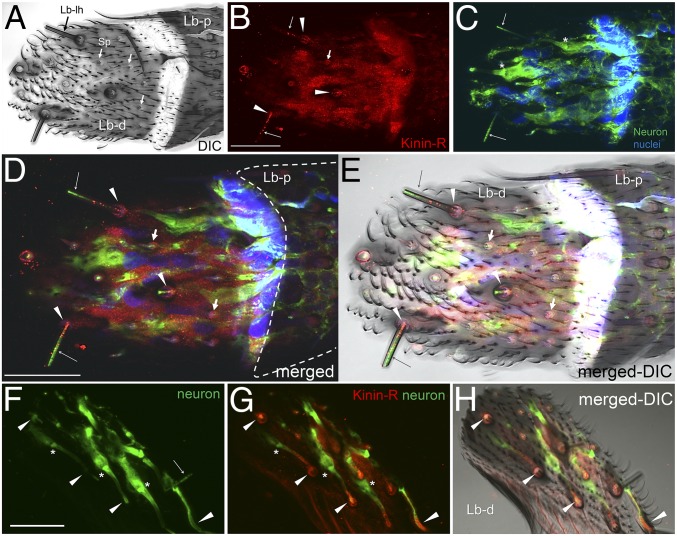Fig. 4.
Confocal analyses of the Aedae-KR immunolocalization in long labellar sensilla (Lb-lh, long hair) (black arrow) and short papillae (Sp) (white arrows) in the distal segment of the female labellum. Lb-d, labellar distal segment. (A) Diffused interference contrast (DIC) image. (B–H) The receptor signal (red) is present in dendrites of sensory neurons, indicated by long arrows in B, D, and E, and in accessory cells of both the long labellar sensilla, indicated by arrowheads in B, D, E, G, and H, and short papillae, indicated by short arrows in B, D, and E. Neurons appear green in C–H. Nuclei appear blue in C, D, and E. The root fiber bundles in the ciliary region of sensory neurons are marked by asterisks in C, F, and G. No receptor signal was observed in the labellum proximal segment (the area enclosed by a dashed white line in D). Images were acquired as Z-stacks (Z step: 0.41 µm) using a 100×/1.4 oil immersion objective as follows: A and C, 20 sections; D and E, 11 sections; F, 19 sections. B, G, and H show a single optical section (depth, 4.51 µm from the cuticle). (Scale bars, 20 µm.) Two different tissues are shown in A–E and F–H, respectively.

